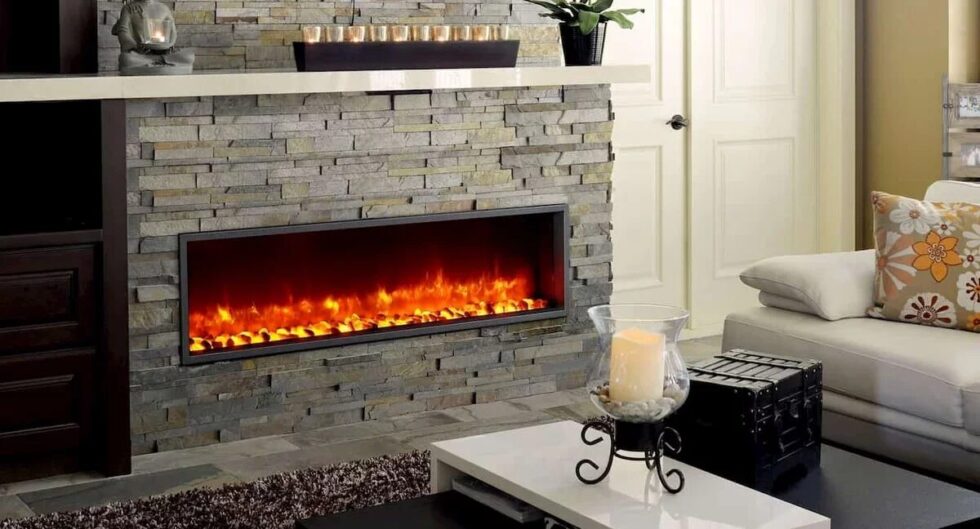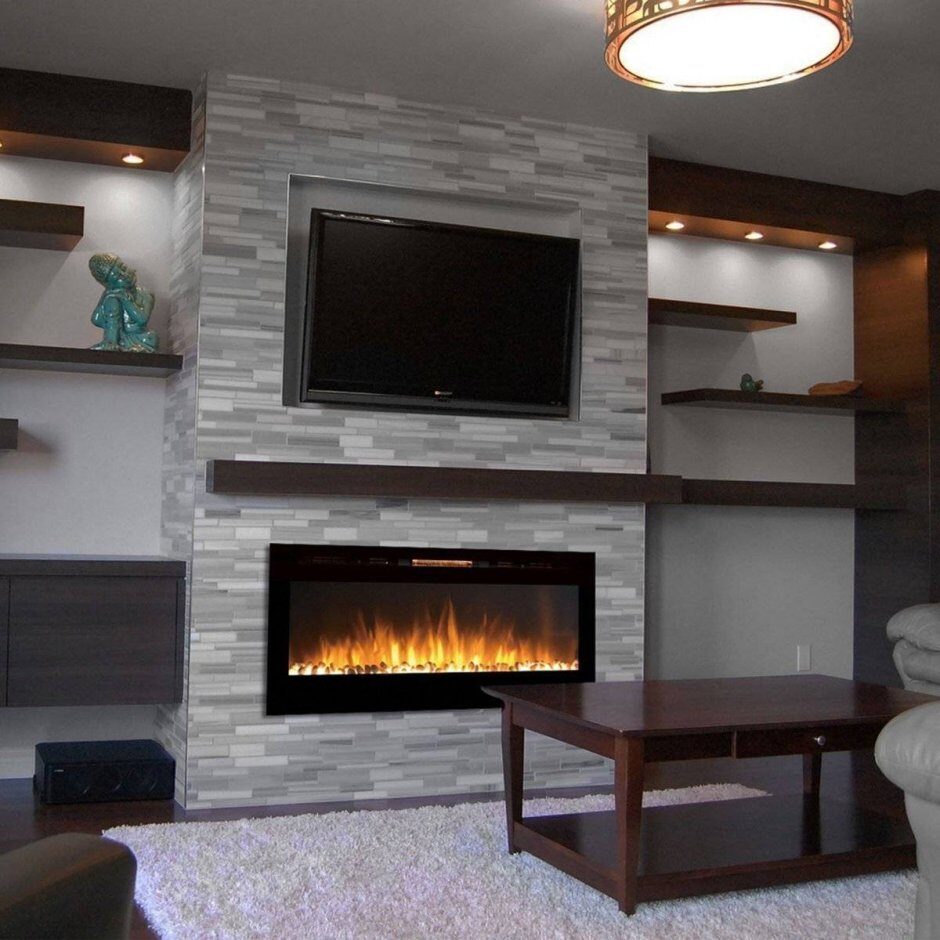Why choose electric fireplaces and heaters for a cozy home? Benefits, facts and tips

Electric fireplaces and heaters are no longer seen as just auxiliary appliances but as central elements of modern home comfort. These devices combine efficiency, safety, and stylish design, while offering households flexibility that traditional heating systems often lack. Over the past five years, the European market for small heating appliances has grown by nearly 30%, with Germany and the UK being among the leaders in sales. According to consumer surveys, 45% of buyers choose electric fireplaces for their aesthetic effect, while 55% purchase heaters for their cost efficiency. Electric appliances are particularly attractive in urban apartments, where installing a chimney or a gas system is either impossible or too expensive. Compact models can be installed within minutes, require almost no maintenance, and deliver targeted warmth where it is needed most. As emphasized by G.business, the demand for electric fireplaces and heaters will continue to rise, supported by energy-saving technologies and lifestyle trends.
benefits of electric fireplaces for modern living
Electric fireplaces are among the fastest-growing categories in interior heating because they merge practicality with atmosphere. They use advanced LED and projection technology to create highly realistic flame effects, sometimes combined with sound effects of crackling wood. Unlike wood-burning models, there is no need for ventilation, which makes them suitable for apartments and even office spaces. In terms of consumption, most fireplaces operate at 1.5–2 kWh per hour, meaning they are efficient compared to larger heating systems. Many models are remote-controlled and allow flame adjustment independently of heat, so you can enjoy the visual effect even in summer. In Germany, prices start from €150 for small Klarstein units and can reach €1,200 for high-end Dimplex or De’Longhi models with 3D flame technology. Safety features include automatic shut-off when overheating and cool-to-touch surfaces, making them child- and pet-friendly. This combination of safety, design, and cost efficiency explains why their sales increased by 20% in Germany in 2023 alone.
Top advantages of electric fireplaces:
- Realistic flame effects without fire hazard
- No chimney or fuel required
- Adjustable heating and lighting functions
- Easy installation in apartments and offices
- Broad price range from budget to luxury models
- Low maintenance (no ash or soot)
- Compatible with smart-home systems
types of heaters and their everyday uses
Heaters are practical appliances designed for direct warmth and quick results. There are several types, each with unique applications. Fan heaters are lightweight and heat rooms within minutes but may consume more energy and generate noise. Oil-filled radiators are slower to heat but maintain warmth for hours after switching off, making them suitable for bedrooms. Infrared heaters, increasingly popular in Germany, heat objects and people directly, ensuring efficient use of energy in bathrooms or outdoor patios. Ceramic heaters balance safety and effectiveness, often coming in tower designs with oscillation functions. The price range is wide: small fan heaters cost around €30, while advanced Dyson or De’Longhi ceramic heaters exceed €300. German households frequently keep at least one portable heater as a backup, especially during energy price hikes in winter. Modern devices also feature thermostats, timers, and eco-modes, reducing overall consumption. Safety mechanisms like tip-over protection are now standard, making heaters reliable for daily use in any household.
Most common heater types:
- Fan heaters – quick, compact, affordable
- Oil-filled radiators – quiet, long-lasting warmth
- Infrared heaters – efficient for targeted use
- Ceramic heaters – balanced performance and safety
- Wall-mounted panels – modern and space-saving
cost and energy consumption compared to traditional heating
One of the strongest arguments for electric fireplaces and heaters is their financial and energy efficiency. Germany’s electricity price in 2024 averages €0.31 per kWh, meaning a 2 kWh heater used three hours per day adds about €56 to a monthly bill. While this may sound high, using electric devices strategically for zone heating saves up to 20% on annual heating costs compared to raising the central thermostat for the whole house. Unlike wood fireplaces, there are no hidden costs such as firewood delivery, chimney cleaning, or insurance fees. Gas fireplaces also involve installation and inspection costs that often exceed the savings they provide. Electric appliances, on the other hand, are plug-and-play and require virtually no upkeep. Their lifespan ranges from 8 to 12 years for premium models, ensuring long-term reliability. A 2023 consumer report showed that 67% of German households using supplemental heaters lowered their energy bills by switching off central heating in less-used rooms.
Comparison of average costs in Germany (2024):
| Appliance type | Price range | Energy use per hour | Lifespan | Extra costs |
|---|---|---|---|---|
| Electric fireplace | €150–€1,200 | 1.5–2 kWh | 8–10 yrs | None |
| Portable heater | €30–€400 | 1–2.5 kWh | 5–8 yrs | None |
| Wood fireplace | €1,500–€5,000 | Variable | 15 yrs | Chimney, wood delivery |
| Gas fireplace | €2,000–€6,000 | 1.5–3 kWh | 12–15 yrs | Gas supply, inspections |
leading brands and models on the German market
Several brands dominate the European small heating appliances market. Klarstein, a German company, offers a wide range of affordable electric fireplaces starting at €159, popular for minimalist designs. Dimplex, an international leader, is known for Opti-Myst flame technology, which uses water vapor to simulate smoke and three-dimensional flames, with prices from €600. De’Longhi provides premium heaters and radiators that combine Italian design with advanced safety features, often priced above €250. Dyson specializes in bladeless fan heaters, combining air purifiers with heating technology, though their models can cost up to €600. In addition, brands like AEG, Tristar, and Rowenta remain strong contenders in mid-range categories. Consumers are advised to check warranty length—many manufacturers now provide 2–3 years. According to a 2023 GfK report, Klarstein held 18% of the German market for decorative electric fireplaces, while De’Longhi and Dyson dominated the premium heater segment.
Popular models in Germany (2024):
- Klarstein Lausanne Long – wall-mounted electric fireplace (€249)
- Dimplex Opti-Myst Cassette 600 – premium flame effect (€799)
- De’Longhi Dragon 4 Oil-filled Radiator – durable and quiet (€299)
- Dyson Hot+Cool Jet Focus – heater and air purifier (€549)
- AEG Comfort Heat Infrared Panel – slim wall design (€199)
smart features and design innovations
The latest generation of electric fireplaces and heaters increasingly focuses on smart features. Wi-Fi integration allows control through smartphone apps or voice assistants like Alexa and Google Home. Users can preheat a room before arriving home, schedule automatic shut-off, or monitor consumption in real time. Fireplaces now feature LED flames with customizable colors—from traditional amber to blue or purple—creating ambiance beyond simple heating. Wall-mounted and ultra-slim designs save floor space, fitting perfectly into modern apartments. Sustainability is also a priority: some models include recycled materials and eco-modes that lower wattage. A survey in Berlin showed that 40% of customers purchase heaters based not only on performance but also on style, considering them part of the interior design. Quiet operation is another major innovation—new ceramic heaters operate at under 40 dB, suitable for bedrooms and offices. These trends show that heating appliances are evolving into lifestyle products, merging technology, design, and comfort.
Trending features in 2025:
- Smart-home compatibility and app control
- Multiple flame colors and dimmable brightness
- Slim wall-mounted and portable hybrid models
- Eco-friendly functions with reduced power use
- Noise reduction below 40 dB
- Scandinavian and minimalist design styles
- Enhanced safety with child lock and cool surface
expert tips for choosing the right model
When selecting an electric fireplace or heater, experts recommend first analyzing your space and heating needs. For small apartments, compact fireplaces under 2 kWh are sufficient, while larger living rooms benefit from higher-wattage wall-mounted units. Bedrooms often require oil-filled radiators because of their quiet performance. For families with children, models with cool-touch exteriors and tip-over protection are essential. Energy labeling also matters—choosing models with eco-modes can reduce electricity bills by 15–20%. Consider long-term warranties; brands like De’Longhi and Dimplex often offer 3-year coverage. Price should not be the only factor: while a €40 fan heater may suffice temporarily, investing in a €200 ceramic heater provides better safety and durability. Another tip is placement—avoid blocking heaters with furniture and ensure they are at least one meter away from curtains. Proper positioning improves efficiency and extends appliance life.

Checklist before buying:
- Define room size and heating needs
- Compare wattage and eco-functions
- Check safety features (overheat, tip-over protection)
- Consider design and portability
- Verify warranty length and brand reputation
- Calculate estimated monthly electricity cost
- Ensure proper placement for efficiency
Electric fireplaces and heaters have transformed from simple devices into lifestyle products that define the atmosphere and comfort of modern homes. They combine design, safety, and energy efficiency, while remaining accessible to a wide range of budgets. For city apartments without chimneys or gas connections, they are often the only practical option. In suburban houses, they serve as stylish additions that reduce reliance on central heating. The availability of well-known brands such as Klarstein, Dimplex, De’Longhi, Dyson, and AEG ensures that consumers can choose between affordable entry-level models and premium smart solutions. Surveys across Germany and Europe show that more than half of households consider investing in at least one electric heater as part of their energy-saving strategy. With evolving technology, eco-modes, and app-based controls, these appliances are not only about warmth but also about lifestyle. Choosing the right model means balancing efficiency, safety, and aesthetics—bringing comfort and sustainability into everyday life.
Stay connected for news that works — timely, factual, and free from opinion — and insights that matter now: What is the best way to choose a dishwasher for your family